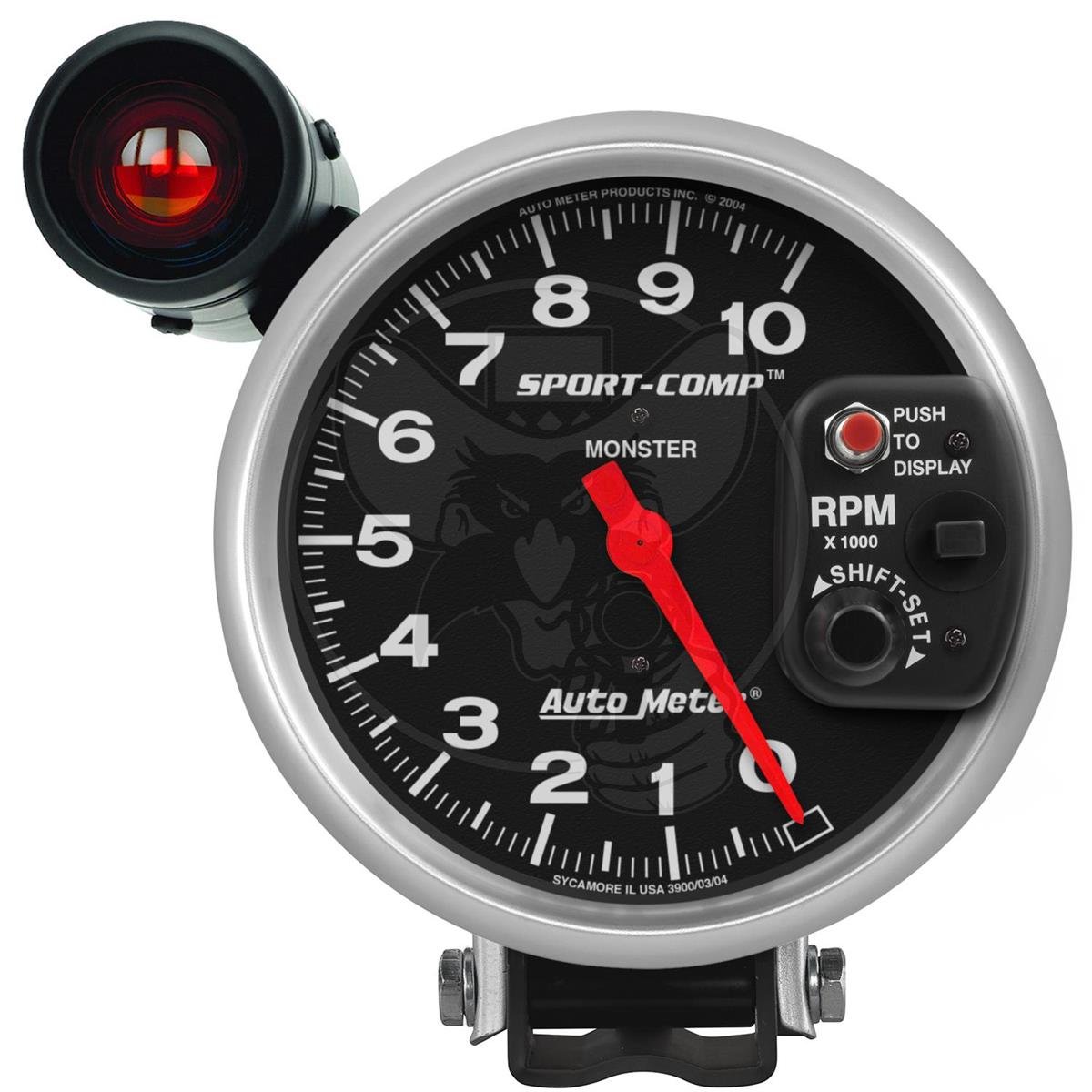Specialist Tips for Keeping and Adjusting Your Tachometer
Specialist Tips for Keeping and Adjusting Your Tachometer
Blog Article
The Value of a Tachometer in Keeping An Eye On Engine Speed and Efficiency in Automotive Applications
In the realm of automobile engineering, the tachometer stands as an essential tool in the driver's arsenal, offering a direct home window right into the internal operations of a lorry's engine. Past its feature as a mere gauge of revolutions per minute (RPM), the tachometer serves as a vital device for fanatics and specialists alike, offering real-time insights into engine performance and health.
Importance of Monitoring Engine RPM
Keeping track of engine RPM, or revolutions per min, is a critical aspect of automotive upkeep and performance examination. Engine RPM straight correlates with the speed at which the engine's crankshaft revolves, suggesting exactly how rapidly the engine is running - tachometer. By keeping an eye on RPM, auto mechanics can assess the health of the engine, discover possible problems, and fine-tune performance. An abnormal RPM reading may indicate problems such as engine misfires, faulty ignition system, or issues with the gas shipment system. Regularly high RPM readings can suggest aggressive driving habits or the demand for a higher gear change to boost gas effectiveness.
In addition, keeping an eye on engine RPM is necessary for efficiency evaluation in auto racing and high-performance cars. Keeping ideal RPM degrees is vital for achieving peak power outcome and acceleration. Racers commonly use tachometers to ensure they are running within the optimal RPM array for maximum efficiency. In summary, keeping an eye on engine RPM is not just important for detecting problems yet also for enhancing engine efficiency in various vehicle applications.

Benefits of Real-Time Data
In auto applications, real-time information plays an essential duty in providing immediate understandings right into the efficiency and condition of the lorry. By constantly keeping an eye on numerous parameters such as engine speed, temperature level, fuel usage, and much more, real-time data provides many benefits that add to enhanced efficiency and safety on the road.
Additionally, real-time information assists in performance optimization by providing prompt comments on driving practices and engine performance. Vehicle drivers can readjust their habits in real-time based on this info to achieve far better gas economic climate and prolong the life-span of their automobile.

Moreover, real-time information plays a crucial duty in contemporary automotive diagnostics, making it possible for service technicians to quickly detect and address breakdowns. This leads to lowered downtime, lower upkeep costs, and eventually, improved total car integrity and longevity (tachometer). By using the power of real-time data, vehicle stakeholders can make enlightened decisions that positively affect both the efficiency and longevity of the car
Effect On Gear Shifts
Reliable gear changes in automotive applications dramatically affect overall performance and driving experience. The tachometer plays a crucial function in maximizing equipment changes by offering real-time engine speed information to the vehicle driver. When coming close to the redline on the tachometer, it signals the vehicle driver to upshift to stop over-revving the engine and creating prospective damage. On the various other hand, downshifting at the right moment can help maintain the engine in its power band, making certain receptive velocity when required.
Furthermore, the tachometer aids in accomplishing smoother gear transitions, specifically in hand-operated transmissions. By checking engine rate, motorists can carry out gear shifts at the optimum RPM array, minimizing jerking motions and decreasing endure the transmission elements. This precision in equipment adjustments not only enhances driving convenience however also adds to sustain effectiveness.
Enhancing Fuel Performance
Provided the crucial role the tachometer plays in maximizing gear changes for efficiency and engine health, it straight adds to making best use of gas efficiency in auto applications. By supplying real-time feedback on engine rate, the tachometer assists vehicle drivers in preserving the most reliable RPM range for gas economy. When vehicle drivers regularly monitor the tachometer and change their motoring routines accordingly, they can prevent unneeded fuel intake triggered by over-revving or carrying the engine.
In addition, the tachometer helps drivers determine the most fuel-efficient resource gear to be in at any kind of provided minute, preventing the engine from working more challenging than needed. In verdict, the tachometer offers as a useful device in improving gas effectiveness by advertising ideal driving routines and determining areas for enhancement in the car's performance.

Taking Full Advantage Of Engine Durability
The tachometer's function in keeping an eye on engine speed and performance contributes in making certain the long life of vehicle engines. By using the tachometer efficiently, drivers can optimize engine long life with mindful RPM monitoring. Regularly revving an engine too expensive can lead to too much damage on vital elements, such as the pistons, shutoffs, and bearings. Over time, this can cause reduced engine performance and potential breakdowns. Keeping an eye on the tachometer allows vehicle drivers to remain within the recommended RPM array find here for their car, preventing unneeded strain on the engine and expanding its lifespan.

Conclusion
To conclude, the tachometer plays an important role in checking engine speed and efficiency in automobile applications. By giving real-time data on RPM, it permits for effective equipment shifts, boosted fuel effectiveness, and taken full advantage other of engine longevity. This tool is essential for preserving optimum engine performance and making certain the overall performance of a vehicle.
Report this page